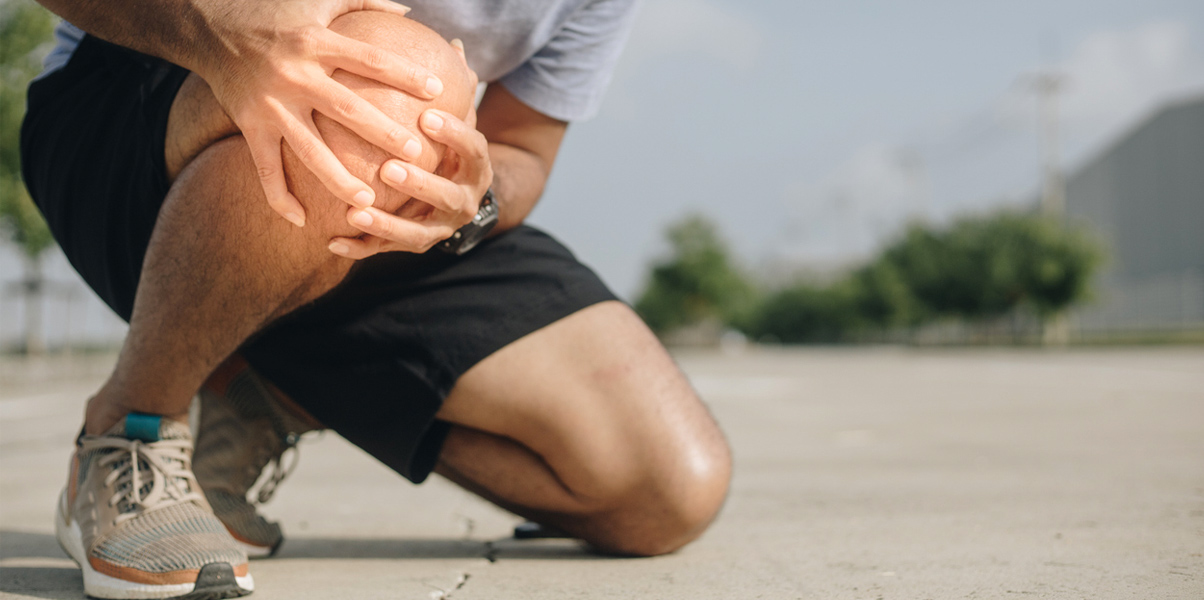How to Fix Jumper’s Knee: Treatment & Recovery

What Is Jumper’s Knee?
Jumper’s knee, or patellar tendonitis, is inflammation or irritation in the tendon connecting your kneecap to your shinbone. It’s common in sports with repeated jumping or running — like basketball, volleyball, and track — but it can also show up in anyone whose training, workload, or recovery gets out of balance.
Over time, that repeated stress causes tiny tears that weaken the tendon. When early inflammation (tendinitis) goes untreated, it can progress into degeneration (tendinopathy). That’s when pain becomes chronic, not just annoying.
If you notice pain just below your kneecap that flares with movement or tightness that lingers after rest, early assessment can prevent it from becoming long-term.
What Causes Jumper’s Knee?
Jumper’s knee develops from repetitive loading — particularly from jumping, landing, or sprinting on hard surfaces. The condition often stems from a mix of factors:
- High-impact training or rapid workload spikes
- Tight quadriceps or limited hip mobility
- Weakness in the hips, calves, or core
- Poor jumping or landing mechanics
Even though it’s common in athletes, anyone who spends time squatting, climbing, or standing for long periods can develop similar tendon overload. Chronic imbalance around the knee often appears alongside other sports-related injuries like runner’s knee.
Common Jumper’s Knee Symptoms
Typical signs of jumper’s knee include:
- Tenderness at the base of your kneecap
- Swelling or stiffness in the front of the knee
- Pain with jumping, running, or walking downstairs
- Discomfort when bending or straightening the leg
These symptoms often start mild and worsen over time if the tendon continues to take a load without recovery. For some, the pain begins only during play; for others, it persists throughout daily activities.
How Is Jumper’s Knee Treated?
Traditional rest and ice help calm pain, but they don’t rebuild strength or resilience. Effective recovery requires guided loading, mobility work, and strength rebalancing. A physical therapist tailors each phase so that stress rebuilds, not breaks down, tissue.
If ignored, tendon changes can worsen, limiting knee motion and strength. But with the right plan, most people return to full sport safely.
Evolving Beyond R.I.C.E.: Embracing P.O.L.I.C.E.
Rehab has shifted from R.I.C.E. (rest, ice, compression, elevation) to P.O.L.I.C.E. (protection, optimal loading, ice, compression, elevation). Controlled stress, not prolonged rest, promotes tendon repair.
Physical therapists at PT Solutions guide you in applying “optimal loading”, introducing the right mix of movement and recovery. This approach is supported by research across other load-sensitive conditions like sprains and strains.
Precision in Dosage
Finding the right intensity matters. A skilled physical therapist adjusts variables like load, speed, and rest to match your tendon’s stage of recovery.
You’ll work through progressive strengthening, beginning with isometric holds for pain control, moving into eccentric and heavy-slow resistance training for tendon remodeling. It’s the same science-backed approach used in orthopedic physical therapy across all load-based injuries.
Holistic Care for Lasting Results
Your hips, ankles, and even your core play a direct role in how your knees handle force. Weak glutes, tight calves, or limited hip extension often shift excess stress to the patellar tendon.
Addressing only the pain spot means missing the full picture. PT Solutions’ therapists assess movement patterns, muscle imbalances, and training habits to restore strength across the kinetic chain. This reduces recurrence and improves long-term performance.
When to See a Physical Therapist
If pain persists, affects your stride, or limits daily life, it’s time for expert guidance. Seek care if:
- Pain worsens with activity or rest
- Swelling or stiffness limits movement
- Knee pain impacts sleep or walking downstairs
PT Solutions offers same-week appointments and personalized treatment to help you move, train, and perform again — pain-free.
How PT Solutions Treats Jumper’s Knee
At PT Solutions, treatment starts with a detailed movement screen and load assessment. We identify exactly where mechanics or workload are failing your knees.
Your plan may include:
- Manual therapy for tight quads and the surrounding tissue
- Progressive tendon loading through eccentric and heavy-slow training
- Neuromuscular re-education to rebuild control through the leg and hips
- Functional drills to safely return to sport or daily movement

Therapists adjust intensity and frequency as your tendon adapts — so every step rebuilds confidence, not fear of pain.
FAQ
Can jumper’s knee heal without physical therapy?
It can improve with rest and careful activity changes, but full recovery is faster and more complete with physical therapy. A physical therapist helps rebuild tendon strength, correct movement patterns, and lower the risk of recurring pain or re-injury.
Why does jumper’s knee hurt more after sitting or resting?
The tendon stiffens when it’s not moving, so pain often spikes after periods of rest. Gentle mobility work and gradual loading help restore flexibility and improve blood flow, making it easier to move without discomfort.
Is jumper’s knee the same as patellar tendinopathy?
Yes. Jumper’s knee and patellar tendinopathy describe the same overuse condition that affects the tendon below the kneecap. The name “jumper’s knee” comes from how often it develops in sports that require frequent jumping or sprinting.
When should I see a doctor for jumper’s knee pain?
If pain limits walking, climbing stairs, or lasts more than a few weeks, it’s time to get it checked. Persistent pain may signal deeper tendon damage, and early evaluation helps prevent it from becoming a chronic injury.